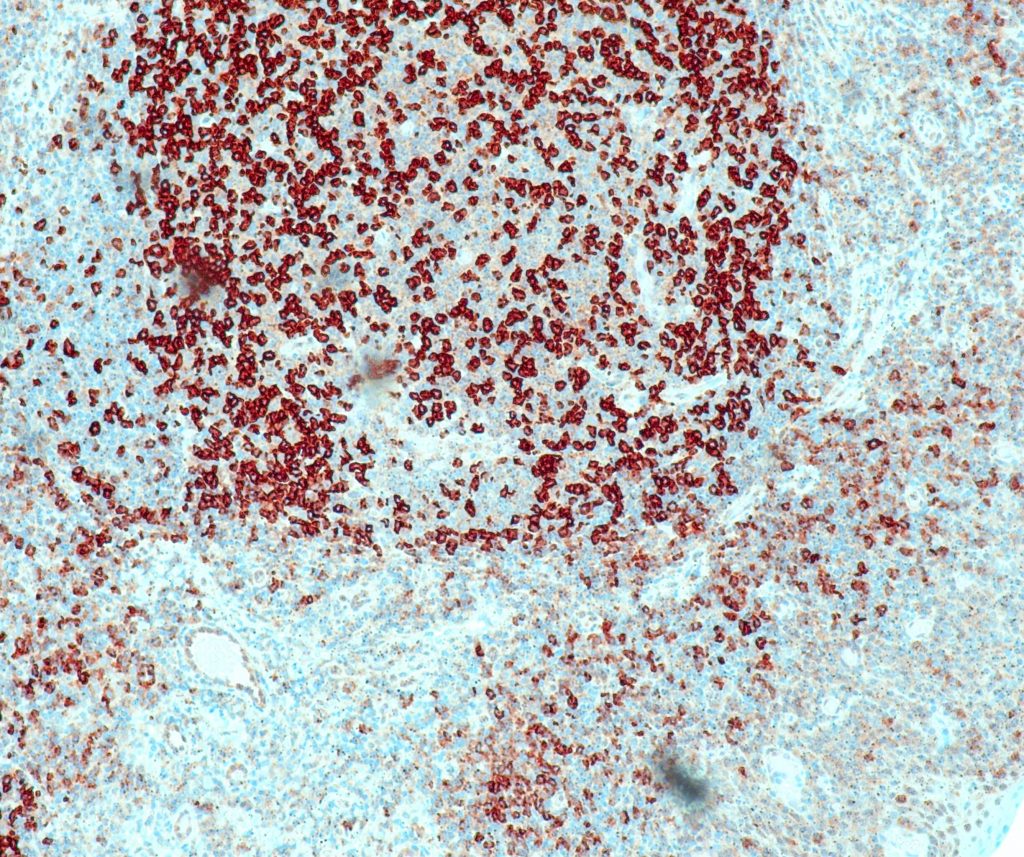„[1] Dorfman DM, Brown JA, Shahsafaei A, & Freeman GJ (2006). Programmed Death-1 (PD-1) is a Marker of Germinal Center- associated T-cells and Angioimmunoblastic T-Cell Lymphoma. Am J Surg Pathol. 30: 802-10.
[2] Ostrand-Rosenberg S, Horn LA, & Haile ST (2014). The Programmed Death-1 Immune Suppressive Pathway: Barrier to Anti-Tumor Immunity. J Immunol. 193(8): 3835-41.
[3] Kantekure K, Yang Y, Raghunath P, et al. (2012): Expression patterns of the immunosuppressive proteins PD-1/CD279 and PD-L1/CD274 at different stages of cutaneous T-cell lymphoma (CTCL)/mycosis fungoides (MF). Am J Dermatopathol. 34: 126-8.
[4] Zeng Z, Shi F, Zhou L, et al. (2011): Expression patterns of the immunosuppressive proteins PD-1/CD279 and PD-L1/CD274 at different stages of cutaneous T-cell lymphoma (CTCL)/mycosis fungoides (MF). PLoS One. 6(9): e23621.
[5] Thompson RH, Dong H, Lohse CM, et al. (2007): PD-1 Is Expressed by Tumor-Infiltrating Immune Cells and Is Associated with Poor Outcome for Patients with Renal Cell Carcinoma. Clin Cancer Res. 13: 1757-61.
[6] Muenst S, Soysal SD, Gao F, et al. (2013): The presence of programmed death 1 (PD-1)-positive tumor- infiltrating lymphocytes is associated with poor prognosis in human breast cancer. Breast Cancer Res Treat. 139(3): 667-76.
[7] Konishi J, Yamazaki K, Azuma M, et al. (2004): B7-H1 Expression on Non-Small Cell Lung Cancer Cells and Its Relationship with Tumor-Infiltrating Lymphocytes and Their PD-1 Expression. Clin Cancer Res. 10: 5094-100.
[8] DÕIncecco A, Andreozzi M, Ludovini V, et al. (2015): PD-1 and PD-L1 expression in molecularly selected non-small-cell lung cancer patients. Br J Cancer. 112(1): 95-102.
[9] Ishida Y, Agata Y, Shibahara K and Honjo T (1992): Induced expression of PD-1, a novel member of the immunoglobulin gene superfamily, upon programmed cell death. EMBO J. 11(11):3887-95.“


